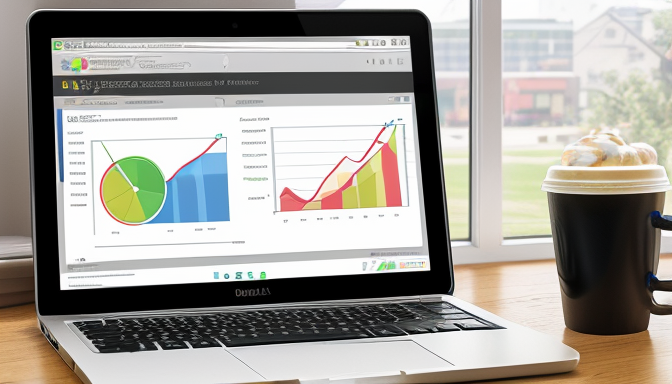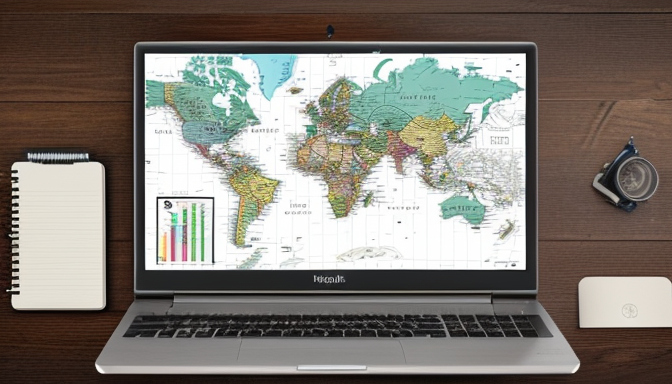
In today’s fast-paced business world, understanding your market is more important than ever. But how do you truly grasp the nuances of consumer behavior? Enter maps data. Yes, you heard that right! Maps data can be a powerful tool for enhancing your market research. Think of it as a treasure map that leads you to valuable insights about your customers and their preferences. By leveraging geographic information, businesses can uncover trends that might otherwise remain hidden.
Imagine you’re trying to sell ice cream in a city. You wouldn’t just set up a shop anywhere. You’d want to know where the most foot traffic is, right? Or maybe where families with kids frequently visit. This is where maps data comes into play. It can help you identify those hotspots, guiding your business decisions like a compass pointing north.
When you research markets with maps data, you’re not just looking at numbers; you’re visualizing the landscape of your potential customers. You can see where your competitors are located, which areas have the highest demand for your product, and even how demographics change from one neighborhood to another. This kind of analysis can be the difference between a thriving business and one that struggles to find its footing.
But how do you get started? First, you need to gather relevant maps data. There are various sources available, such as:
- Publicly available GIS data
- Online mapping services
- Market research firms
Once you have this data, the real fun begins. You can analyze it to reveal insights that inform your strategies. For instance, are there areas where your product is particularly popular? Or maybe certain demographics are more inclined to buy? This knowledge allows you to tailor your marketing efforts, ensuring that you reach the right audience at the right time.
In conclusion, researching markets with maps data is like having a secret weapon in your business arsenal. It helps you make informed decisions and stay one step ahead of your competition. So, why not start exploring the vast world of maps data today? Your future customers are waiting, and they might just be around the corner!

Gather Maps Data for Market Research
When it comes to gathering maps data for market research, think of it as piecing together a jigsaw puzzle. Each piece of data helps create a clearer picture of your market landscape. But how do you collect this critical information? Let’s dive into some effective strategies.
First off, consider using publicly available resources. Many government agencies provide geographic data for free. Websites like the U.S. Census Bureau or local planning departments can be goldmines. They offer demographic data that can be layered onto maps, giving you insights into population density, income levels, and even age distribution. It’s like having a treasure map that leads you to your ideal customer!
Next, don’t overlook the power of GIS (Geographic Information Systems). These tools allow you to analyze spatial data in ways that traditional spreadsheets can’t. With GIS, you can visualize trends and patterns that might not be apparent from raw numbers alone. Imagine being able to see where your sales are strongest or identifying areas that need more marketing attention. It’s like having a superpower for your business!
Another excellent method is to tap into social media platforms. Many users share their locations, and this data can provide insights into consumer behavior. By analyzing location-based posts, you can gauge interest in your products or services in various regions. Think of it as eavesdropping on conversations that can guide your marketing strategies.
Finally, consider conducting surveys or focus groups. Direct feedback from your target audience can help you gather maps data tailored to your specific needs. Ask questions about where they shop, their preferred locations, and even their travel habits. This information can be invaluable when plotting your next move in the market.
To summarize, gathering maps data for market research is not just about collecting numbers; it’s about understanding the story behind those numbers. By utilizing various sources, you can paint a comprehensive picture of your market. Here’s a quick overview:
| Source | Description |
|---|---|
| Government Resources | Free demographic and geographic data |
| GIS Tools | Analyze and visualize spatial data |
| Social Media | Insights into consumer behavior through location data |
| Surveys | Direct feedback from your target audience |
In conclusion, gathering maps data for market research is a vital step in understanding your audience and making informed decisions. By piecing together these diverse data sources, you can create a strategic advantage for your business. Remember, the more you know, the better you can serve your customers!

Study Maps Data for Market Insights
When it comes to understanding your market, maps data can be a goldmine. Imagine walking into a crowded room. You want to know who’s who, right? That’s what maps data does for your business. It helps you see who your customers are, where they live, and how they behave. By diving into this data, you can uncover trends that might surprise you.
First off, let’s talk about customer demographics. Knowing the age, gender, and income level of your customers is crucial. Maps data allows you to visualize this information. For example, if you’re running a coffee shop, you might find that most of your customers are young professionals living in a specific neighborhood. This insight can guide your marketing strategies. You can tailor your promotions to appeal to this group. Maybe offer a discount during rush hours when they’re likely to stop by.
Next, we need to consider purchasing patterns. Maps data can reveal where your customers are buying your products. Are they purchasing more online or in-store? Are there specific areas where sales are booming? By analyzing this data, you can make informed decisions. For instance, if you notice a spike in online orders from a particular region, you might want to focus your advertising efforts there. Think of it as a treasure map leading you to your next big opportunity.
But how do you analyze this data effectively? Here are a few techniques to consider:
- Heat Mapping: This technique highlights areas with high customer activity. It’s like a spotlight on your best customers.
- Cluster Analysis: This helps identify groups of similar customers. It’s great for targeting specific demographics.
- Trend Analysis: Look for changes over time. Are your sales increasing in certain areas? This could signal a growing market.
Incorporating these techniques into your analysis of maps data can lead to actionable insights. You’ll start to see patterns emerge. You might discover, for example, that families prefer your product during summer months, while young adults lean towards it in the winter. This knowledge allows you to adjust your marketing strategies accordingly.
In conclusion, studying maps data for market insights is not just about numbers—it’s about understanding the story behind the data. It’s about connecting with your customers on a deeper level. By leveraging maps data, you can make smarter business decisions that resonate with your audience. So, grab that data and start exploring! You never know what insights you might uncover.

Use Maps Data for Market Planning
When it comes to market planning, the value of maps data cannot be overstated. Imagine trying to navigate a new city without a map. It would be confusing, right? The same goes for businesses trying to understand their market landscape. By utilizing maps data, companies can pinpoint where their customers are located, how they behave, and what they need. This information is like a treasure map leading to strategic opportunities.
First off, let’s talk about how maps data helps in targeted marketing. Businesses can identify specific regions where their products or services are in high demand. For example, if a coffee shop finds that a large number of college students live nearby, they might consider offering student discounts or promotions during exam weeks. This strategic decision is backed by solid maps data, making it a smart move.
Additionally, maps data aids in resource allocation. Think about it: why waste money on advertising in areas where your target audience isn’t? By analyzing geographic trends, businesses can focus their marketing efforts where they’ll have the greatest impact. This not only saves money but also maximizes the effectiveness of campaigns. It’s like fishing in a pond full of fish instead of a dry desert.
Moreover, maps data can reveal demographic trends. Understanding the age, income level, and preferences of customers in different areas can help businesses tailor their offerings. For instance, a clothing retailer might find that younger customers prefer trendy styles, while older customers lean towards classic looks. With this insight, they can adjust their inventory accordingly.
To illustrate the power of maps data in market planning, consider the following table:
| Region | Customer Demographics | Marketing Strategy |
|---|---|---|
| Downtown | Young professionals, ages 25-35 | Social media campaigns, after-work promotions |
| Suburbs | Families, ages 30-50 | Family-oriented events, local sponsorships |
| College Area | Students, ages 18-24 | Discounts, late-night specials |
In conclusion, using maps data for market planning is like having a GPS for your business. It guides you to make informed decisions about where to invest your time and resources. By understanding geographic trends, customer demographics, and potential market opportunities, businesses can create a roadmap to success. So, if you want to navigate the complex world of market planning, don’t overlook the power of maps data.
Frequently Asked Questions
- What is maps data and how is it used in market research?
Maps data refers to geographic information that can reveal patterns and trends in consumer behavior. Businesses use this data to understand where their customers are located, how they behave in different areas, and what demographic factors influence purchasing decisions. By analyzing this data, companies can make informed strategic decisions.
- How can I gather maps data for my business?
There are several methods to gather maps data, including using GIS (Geographic Information Systems) tools, accessing public data sources, and utilizing commercial data providers. You can also collect data through surveys and customer feedback, ensuring that you have a comprehensive view of your target market.
- What techniques can I use to analyze maps data?
Analyzing maps data can involve several techniques, such as heat mapping, spatial analysis, and demographic profiling. These methods help to visualize data effectively, allowing you to identify trends and make data-driven decisions. Tools like Tableau and ArcGIS can be particularly helpful in this regard.
- How does maps data enhance market planning?
Incorporating maps data into your market planning allows for targeted marketing strategies and efficient resource allocation. By understanding geographic trends, businesses can tailor their campaigns to specific regions and optimize their supply chain logistics, ultimately leading to higher sales and customer satisfaction.
- Can maps data help in identifying new market opportunities?
Absolutely! By analyzing maps data, businesses can uncover untapped markets and identify areas with high potential for growth. This insight can guide expansion strategies and help in making informed decisions about where to allocate marketing resources.



